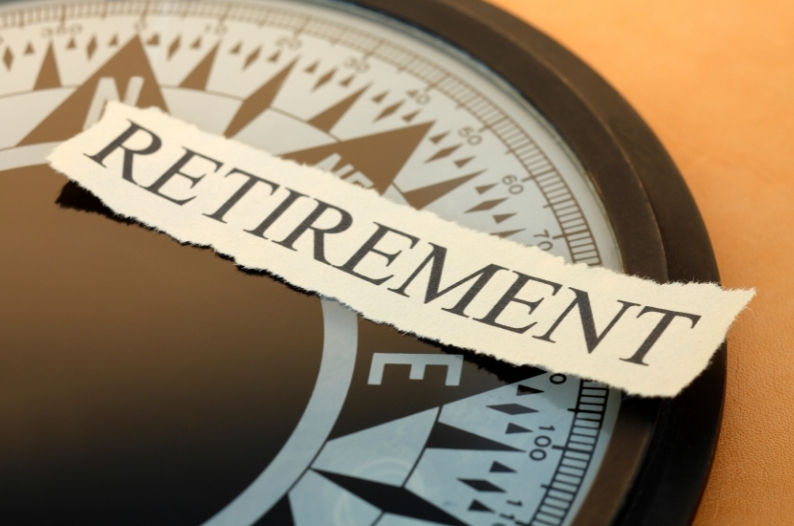May 23, 2024
Retirement Asset Withdrawal Strategies for a Stable Future

By Chris Palabe, CFS®, AIF®
If you are nearing retirement, you have probably been saving for decades for this significant life transition. You may have accumulated a large nest egg through an employer-sponsored retirement account, such as a 401(k), or through other savings accounts like a Roth IRA. Regardless of your method of saving, it’s important to have a strategic plan for transitioning to the next phase of life.
Since your retirement savings will act as a post-employment income stream, you want to ensure it will last throughout your golden years. But navigating through all the tax rules and regulations can be a lot to handle on your own. To help make these financial decisions a little easier, this article reviews some retirement asset withdrawal strategies you can use to prepare for a more stable financial future.
Tax Rules
Believe it or not, there are more tax rules to consider in retirement (1) than when you’re working. And each decision you make affects more decisions—it’s a domino effect.
An example: It’s important to have the right balance between tax-deferred accounts (like a 401(k) or IRA) and tax-free accounts (like a Roth IRA). If you don’t have a good balance and want to move things around, you could consider a Roth conversion, where you convert a portion from a tax-deferred account into a Roth IRA.
However (and here’s where that domino effect kicks in), if you do that, not only can it affect your income taxes for the current year, but it could also impact how much you pay in Medicare payments, and how much tax you pay on your Social Security benefit.
There are a lot more moving parts to consider just like this one. One mistake or overlooked decision could result in an unexpected tax bill. But there’s hope. It is possible to actually lower or even wipe out taxes during retirement.
Portfolio Diversification
I’ve seen many retirees limit their portfolios to stable investments like bonds and CDs. My professional opinion is that it’s more important to maintain a balanced asset allocation during retirement.
Given the historically low returns of CD and bond investments, the unpredictability of inflation, combined with whatever distributions you’re already planning to take, you’re putting yourself at major risk of running out of money during retirement if you don’t diversify.
Withdrawal Order
Many retirees face the problem of managing taxes, which can consume a significant portion of their savings if not handled correctly. In fact, there’s a specific order for withdrawing income from your retirement accounts without jeopardizing your future. By strategically planning distributions from taxable, tax-deferred, and tax-free accounts, you’re positioning yourself to better manage this year’s tax burden—while at the same time preparing for future financial conditions.
Starting withdrawals from taxable accounts, for example, can help reduce taxes early in retirement, allowing tax-deferred accounts more time to grow. Later, tapping into a Roth IRA can provide tax-free income and potentially reduce the taxable amount of Social Security benefits.
So, while it may seem wise to dip into one particular account right now, you should consider how that decision might play out in 10 years. Proper planning and timing of these withdrawals—or the withdrawal order—is essential to stretch your retirement funds and help support financial stability for years to come.
Longevity Risk
It’s time to think about what would happen if you outlive your retirement savings. The human lifespan is getting longer, and having your savings last throughout your lifetime is essential.
A professional retirement planner can help you, working with you to find a sustainable withdrawal rate, a smart investment strategy, and suggestions for when to withdraw Social Security. All these decisions can affect your odds of having enough money throughout your lifetime.
Social Security Decisions
While it might be tempting to withdraw your Social Security benefits as early as possible at age 62, the sooner you start, the lower your benefit amount. (2) It’s important to consider the long-term effects of that lower amount, and how it could potentially impact your lifestyle during your 70s, 80s, and 90s.
Additionally, if you’re still working and receiving a paycheck and you withdraw Social Security benefits, there are significant tax ramifications to consider—and even more when you add a Roth conversion into the equation.
Choosing the Right Medicare Plan
Thinking about retiring before age 65? Remember that Medicare doesn’t kick in until 65, which means you need health insurance to fill the gap until Medicare is available.
Also, you have a new set of decisions to make once you’re eligible to sign up: you can sign up for the Original Medicare (parts A and B) or a Medicare Advantage plan.
If you choose Original Medicare, additional decisions include which Medicare Supplement plan you’ll need. Each option has a variety of variables, including price, coverage areas, co-pays, and deductibles.
Keep in mind that if you don’t enroll in the right time frame, Medicare penalizes you with higher premiums for the rest of your life. It gets even more challenging if you work past age 65 and get health insurance coverage from your employer.
Partner With a Professional
Keeping track of all these rules and regulations can be confusing. They also have the potential to change every time there’s a new session of Congress. Don’t let yourself get overwhelmed with the details. Instead, partner with a financial professional who can tailor these strategies to pursue your financial goals.
At Palabe Wealth, we can help you create a customized retirement plan that allows you to focus on living out your retirement dreams. Schedule a 15-minute introductory phone call or call us at 847-249-6600 to learn if we are the right fit for your financial goals.
The opinions voiced in this material are for general information only and are not intended to provide specific advice or recommendations for any individual.
There is no guarantee that a diversified portfolio will enhance overall returns or outperform a non-diversified portfolio. Diversification does not protect against market risk.
Traditional IRA account owners have considerations to make before performing a Roth IRA conversion. These primarily include income tax consequences on the converted amount in the year of conversion, withdrawal limitations from a Roth IRA, and income limitations for future contributions to a Roth IRA. In addition, if you are required to take a required minimum distribution (RMD) in the year you convert, you must do so before converting to a Roth IRA. (22-LPL)
Asset allocation does not ensure a profit or protect against a loss. (34-LPL)
All investing involves risk including loss of principal. No strategy assures success or protects against loss.
This material was prepared for Palabe Wealth Inc.’s use.
___________
(1) Taxation of Retirement Income, FINRA, 2024
(2) Starting Your Retirement Benefits Early, SSA, 2024

Chris Palabe, CFS, AIF®
Chris Palabe is the CEO and a Financial Advisor at Palabe Wealth, a firm that provides exceptional expertise in the Financial Planning space. For over 25 years, he has cultivated a deep understanding of the complexities of wealth management and retirement planning, making him a valued advisor to both Plan Sponsors of 401(k) plans and Individual Investors.
Holding esteemed designations such as Certified Fund Specialist (CFS) and Accredited Investment Fiduciary (AIF), Chris showcases his commitment to upholding the highest standards of investment advice and fiduciary responsibility in his advisory relationships. These designations are a testament to his knowledge and dedication to providing clients with sophisticated and ethical financial guidance.
He holds his Series 6, 7, 63, and 65 licenses through LPL Financial, which qualify him to offer a broad range of financial products and services.
Chris’s distinguished career is characterized by his unwavering commitment to his clients' financial well-being. He focuses on crafting tailored strategies that aim to optimize retirement outcomes and financial independence. He continually strives to help the individuals he works with on their path towards financial success.
Over the years Chris has refined a consistent, strategic investment philosophy supported by a significant body of academic research. He believes that a widely diversified portfolio of investments tailored to each client’s unique risk tolerance and financial goals is the key to their financial success.
Beyond his professional achievements, Chris has a profound passion for dressage, a highly skilled form of horse riding performed in exhibition and competition. This discipline requires a remarkable level of dedication, precision, and harmony between rider and horse, qualities that mirror his approach to financial planning.






